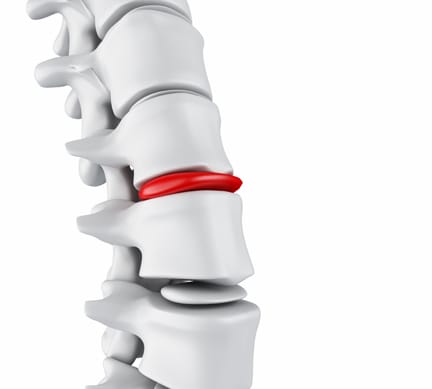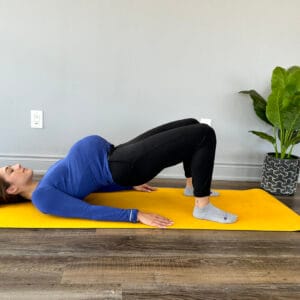A human spine is comprised of 24 small bones called vertebrae. The vertebrae support and protect the spinal cord, which runs from your neck down to your back. Between each vertebral bone, there are small spongy discs. These discs, when healthy, help to cushion and absorb shock from the spine and also aids in keeping the spine flexible. A lumbar disc herniation occurs when a disc becomes damaged and ruptures or breaks open. This is also known as a ruptured or slipped disc. A herniated disc can occur anywhere along your spine, but they are most commonly found in the low back or lumbar spine.
Common causes of lumbar disc herniations:
- Age-related wear and tear. With age, your discs begin to dry out and become less flexible.
- Repetitive stress to the low back such as repetitive lifting, bending or twisting. This type of spinal injury can cause cracks or little tears in the disc’s outer layer. The fluid inside the disc will then seep out through these cracks and tears which causes the disc to bulge or herniate/break open.
Risk factors:
- Occupation – jobs that are physically demanding that require repetitive lifting, bending, pushing, pulling and twisting
- Excess body weight – causes stress in your low back discs
- Genetics – inherited predisposition
- Smoking
When a lumbar disc herniates, it can cause the following symptoms:
- Pain, numbness, tingling, burning and weakness into your buttock, down one or both of your legs and into your feet. This happens because a herniated disc will compress nerve roots. This is known as “sciatica”, which is the most common symptom of a lumbar disc herniation.
- General back ache or no pain at all if the disc that is herniated is not compressing a nerve.
Cauda equina syndrome is a serious, but rare problem that could result from a herniated disc in your low back and requires immediate medical attention. Signs of cauda equina syndrome include loss of bowel or bladder control along with numbness or weakness in both legs.
Treatment for lumbar disc herniation:
- Rest for 1 or 2 days if the pain is severe. Otherwise it is recommended to stay active, as prolonged bed rest can make the problem worse by weakening your muscles.
- Using a heat pad or take a warm shower.
- Physiotherapy or chiropractic treatment to help with pain. A number of different modalities can be used to help ease the pain and expedite recovery. Exercises will be given to help minimize pain and prevent further injury by keeping your back strong.
- Taking anti-inflammatories or medication prescribed by your doctor. Although medication will not cure the herniated disc, it will help with the swelling and pain.
- Cortisone injection given by your doctor if the pain doesn’t improve with medication.



